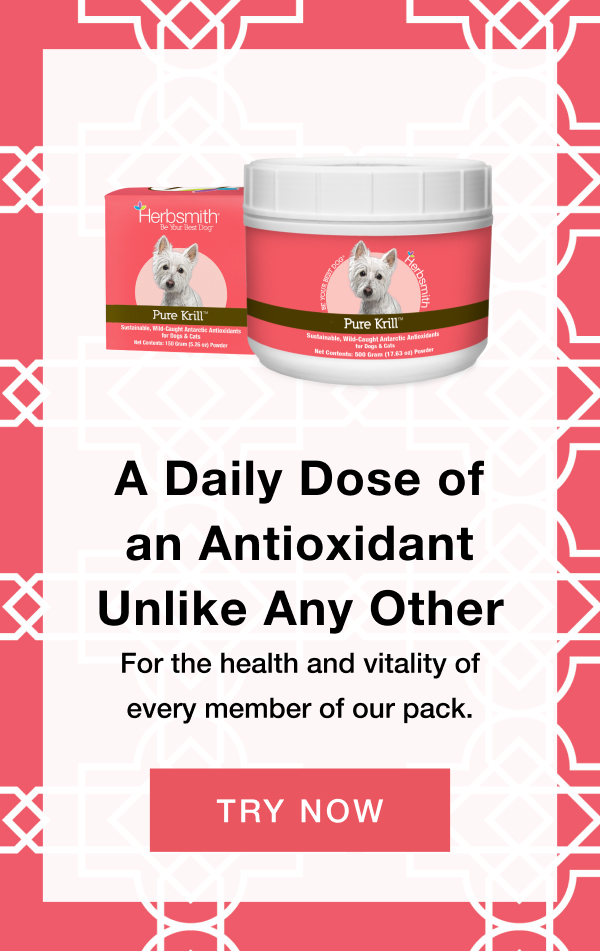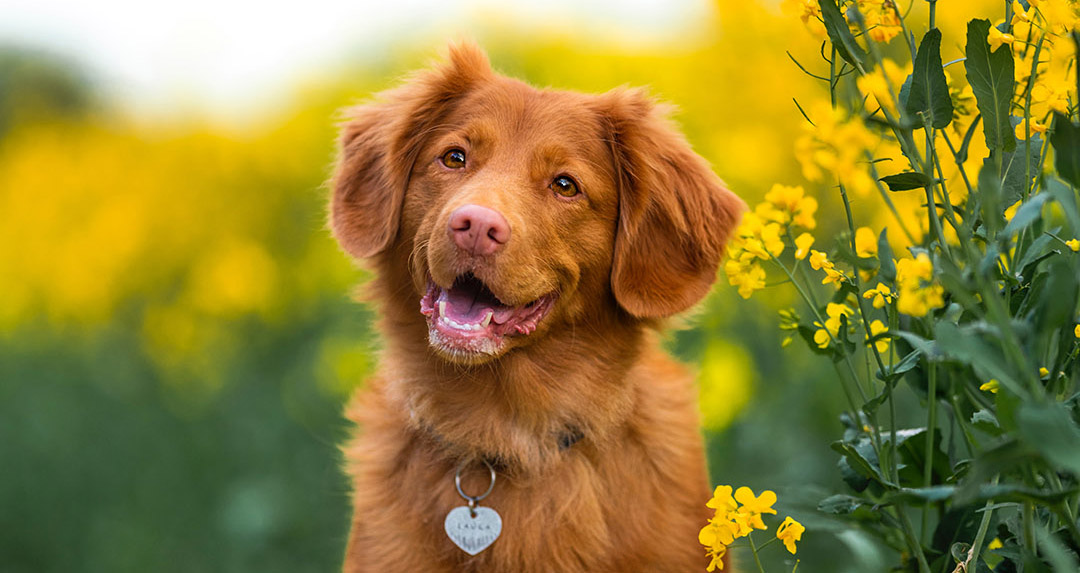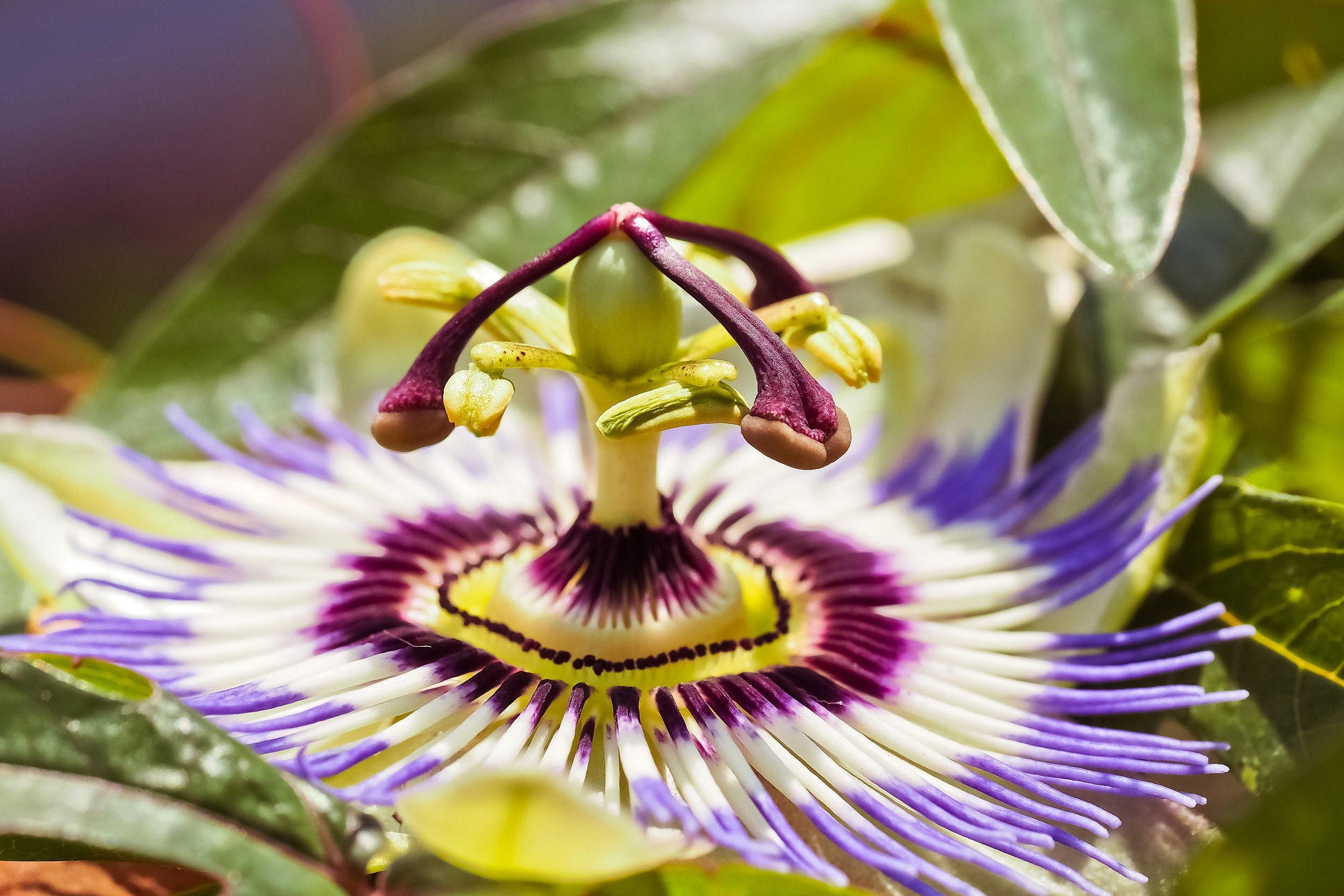Home > Blog > Antioxidant | Read Time: 6-7 minutes
Astaxanthin… hmmm.
Okay, is this a sci-fi novel with made-up words and little green aliens?

It’s definitely out-of-this-world (read: awesome), but it’s not from the latest sci-fi thriller. It’s a powerful antioxidant that can have a huge impact on your dog’s health.
We’re going to cover everything astaxanthin. Button up your lab coats, because we’re starting with some science… It’ll be important later.)
It’s definitely out-of-this-world (read: awesome), but it’s not from the latest sci-fi thriller. It’s a powerful antioxidant that can have a huge impact on your dog’s health.
We are going to cover everything astaxanthin:
But first, we need to button up your lab coats, because we’re starting with some science… It’ll be important later.)
Oxidative Stress & What It Means For Your Dog
Every day, chemical reactions happen inside your dog’s body to keep her alive and healthy. These reactions happen as a part of normal bodily processes (think metabolism, inflammation, and exercise). As a result of these processes, free radicals are released as byproducts into the body.

Additionally, when we’re exposed to toxins like pollution, chemicals, and pesticides, even more free radicals are released in our bodies.
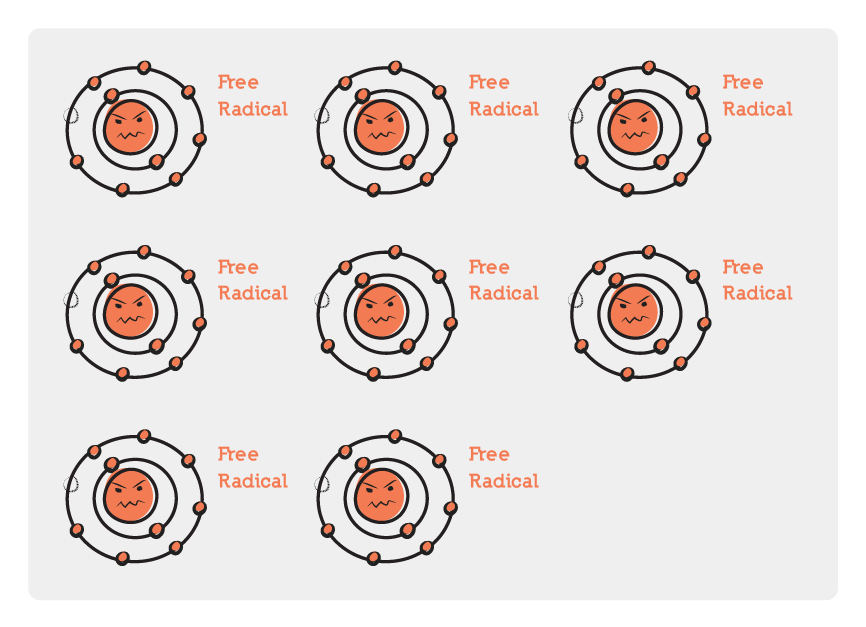
The main thing you need to know about free radicals is that they are up to no good — they roam around the body and steal electrons from stable molecules. This theft, called oxidation, destabilizes the molecules and leads to a chain reaction of cell damage called oxidative stress.
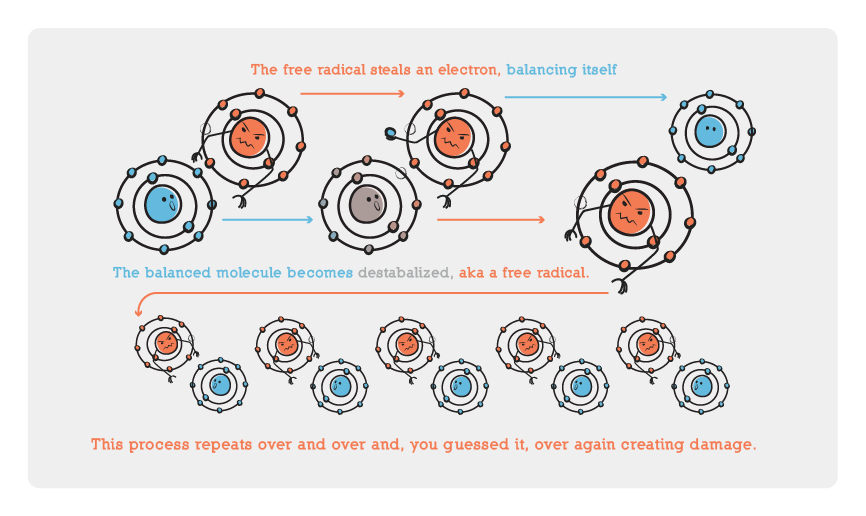
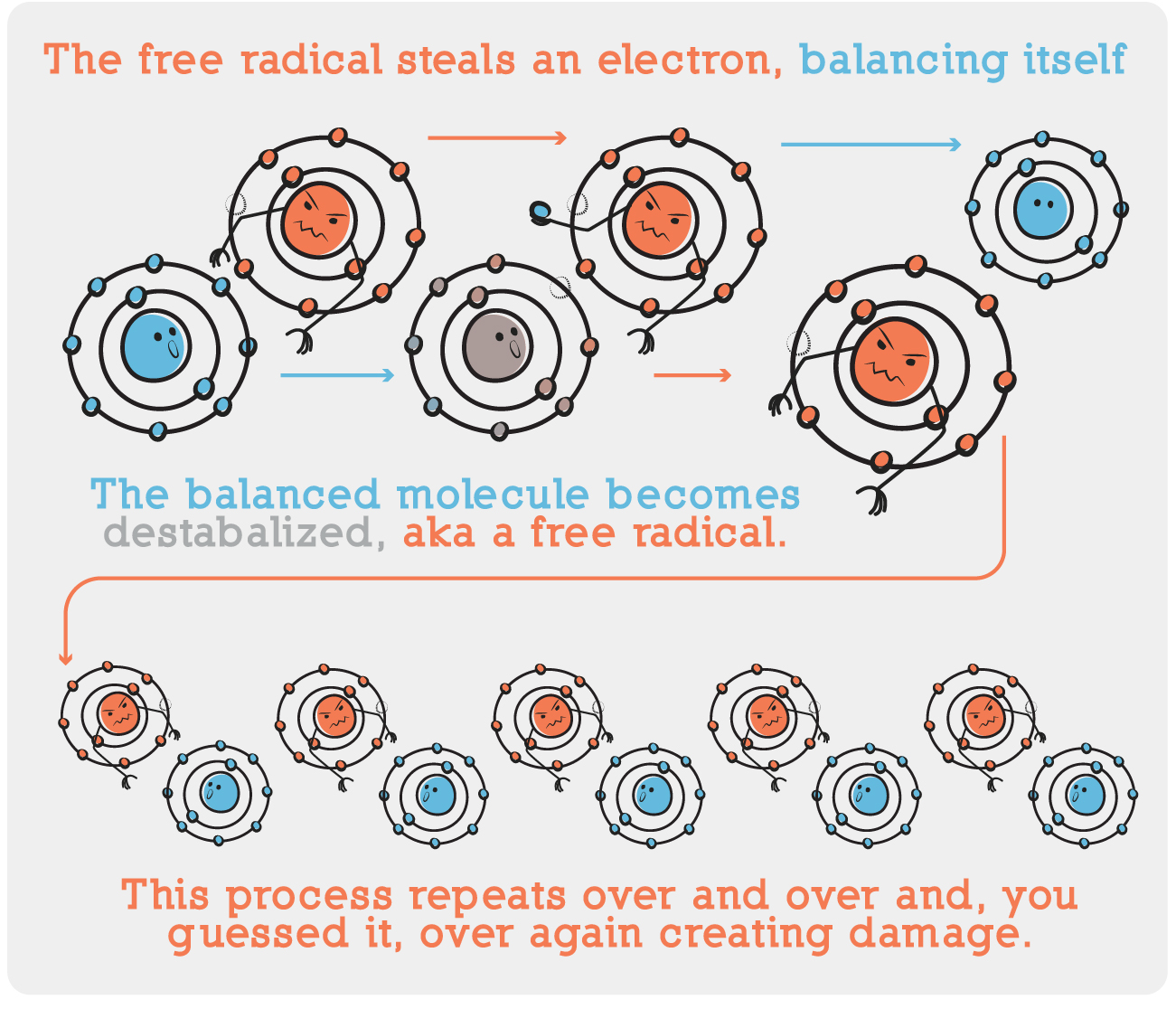
Because it hurts cells and body functioning, oxidative stress contributes to aging and age-related health issues. It can lead to inflammation, cognitive disorders, and cancer. This is true for both dogs and humans.
While aging is inevitable, oxidative stress can be reduced with antioxidants. Antioxidants intercept free radicals and neutralize them so they won’t plunder the stable molecules, which ultimately prevents the cell damage known as oxidative stress.
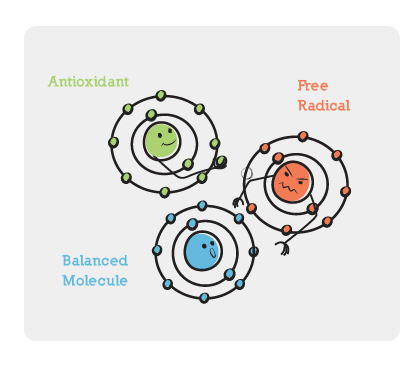
To review: free radicals are the bad guys, antioxidants are the good guys.
So… how do I get some of those antioxidants?
Dogs (and humans!) get antioxidants in two ways: by consuming them and by producing them within their own bodies.
As your dog ages, though, her body will produce fewer antioxidants. This means that she’ll need antioxidant supplementation.
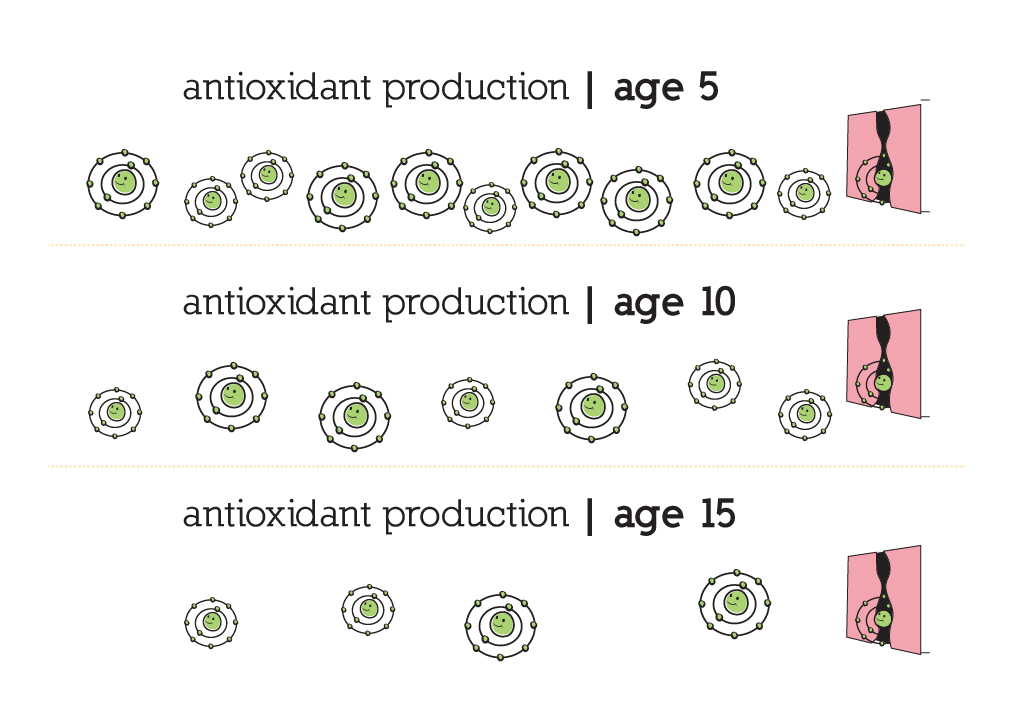
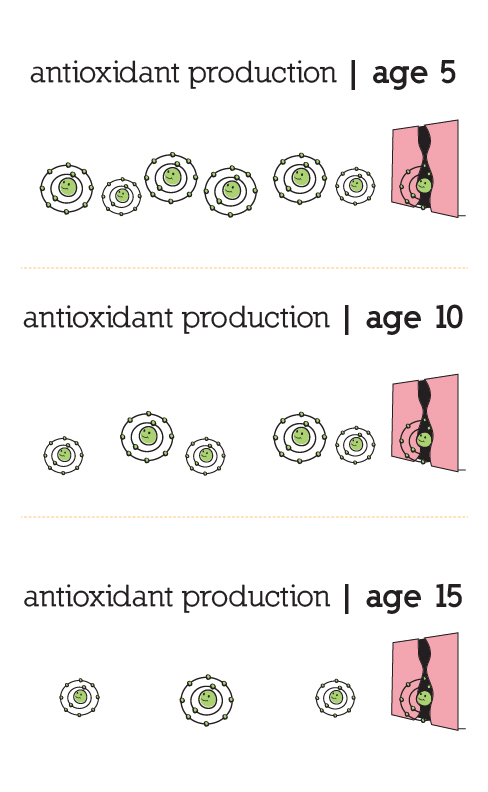
Remember, the cool thing about antioxidants is that they prevent the damage from happening in the first place. There’s no need to wait until your dog becomes gray in the face — in fact, it’s important that you don’t wait. Maintaining good health and hearty levels of antioxidants is the best way to fight oxidative stress. If you monitor your dog for gray hairs, you’ll actually see a difference in a week when you add or subtract antioxidants from your dog’s bowl (of course, more antioxidants means fewer gray hairs).
Now that you’ve mastered the basics, it’s time for the advanced class. Meet… astaxanthin.
What Is Astaxanthin (And How Exactly Do You Pronounce It)?
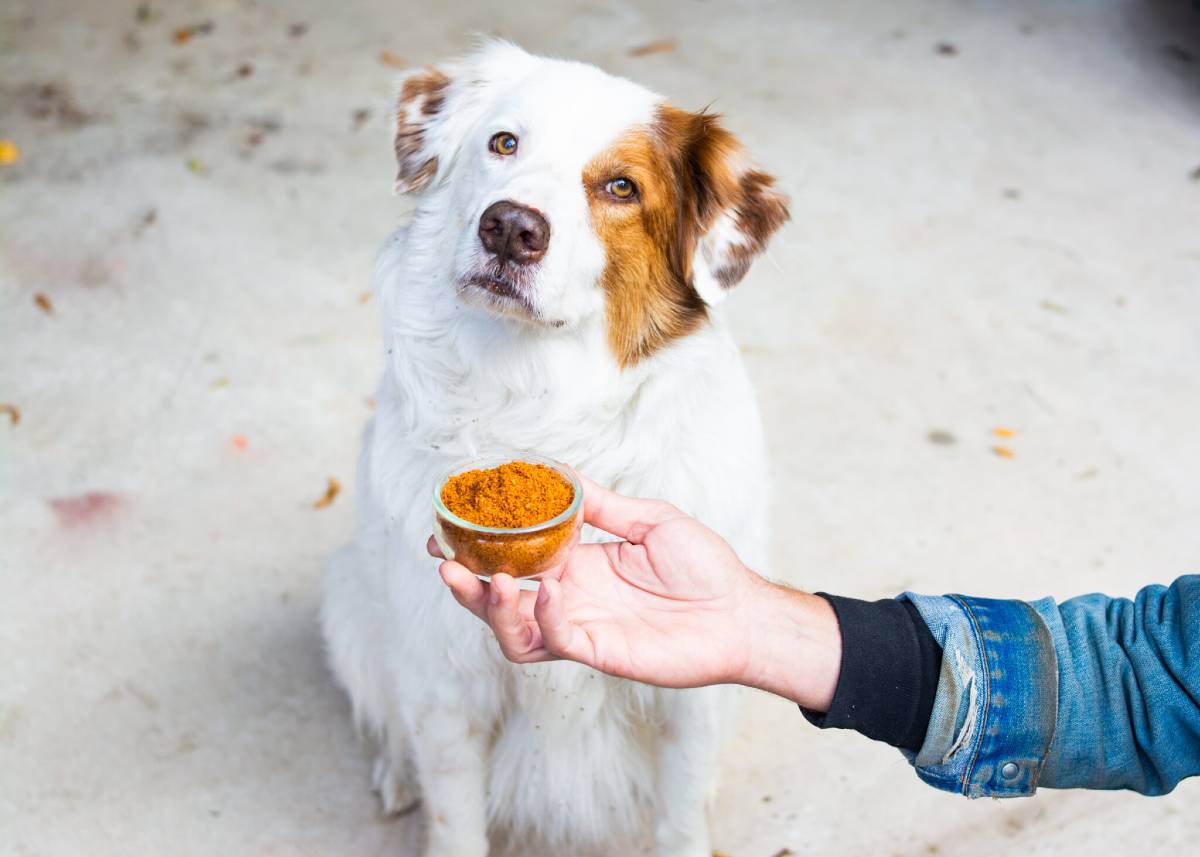
Hold up. Asta-what-what?
Ast-uh-zan-thin. You got it.
So what is it exactly? It’s more than a mouthful.
Known as “nature’s strongest antioxidant,” astaxanthin is a lipid-soluble antioxidant. Because it’s lipid-soluble, it spans the entire membrane of a cell inside and out for complete coverage. It’s particularly powerful — and unlike any other antioxidant — because it works in both water and fat zones of a cell membrane. It can neutralize free radicals at the source of where oxidative stress occurs.
Its free radical scavenging ability is greater than vitamin C, vitamin E, and beta-carotene. (Like hundreds of times more powerful.)
Remember, oxidative stress is cell damage, so stopping that oxidative stress is the name of the game. And astaxanthin is one heck of a team player. If your dog had opposable thumbs, he’d give it two (four?) thumbs up.
Is Astaxanthin Safe For Dogs?
In a word, yes! It’s not just safe for dogs; it is excellent for dogs. Just like humans, dogs can benefit tremendously from antioxidants — and astaxanthin is one of the most powerful antioxidants of them all. Astaxanthin can do wonders for your dog’s overall health and well-being (which we will get to shortly).
The Best Astaxanthin Supplement For Dogs

The best source of astaxanthin for your dog is through supplementation, not diet alone. Most humans feed their dogs kibble and often don’t realize that their four-legged friends are missing out. While kibble does technically provide adequate amounts of macronutrients (fat, protein, fiber, etc.), it doesn’t offer the nutrients dogs need to truly thrive — like the all-important antioxidant.
The good news is that supplementation can fill in these nutritional gaps. There’s a common misconception that supplements are only for pets with current health problems or a need for something “extra.” But the reality is that supplements benefit all dogs. Ideally, supplements like astaxanthin should be given proactively — in other words, to protect our healthy dogs and help them live their best lives.
There are several ways to add astaxanthin into your dog’s diet, but the best source of astaxanthin is krill (from a credible supplier, of course, committed to sustainability). Yes, we’re talking about the tiny crustacean. Though whales might be the most well-known krill connoisseur, pups can benefit big time when you supplement their diets with ground krill — starting with that astaxanthin. The astaxanthin in krill is highly potent and actually accounts for krill oil’s bright red color.
Also, the astaxanthin helps stabilize the omega-3 fatty acids in ground krill, so it works as a natural preservative, preventing the fatty acids from going rancid, like fish oils. That means no added preservatives and a purer supplement. Not too shabby. And speaking of omega-3… the omega-3 fatty acids EPA and DHA found in krill provide numerous health benefits. EPA and DHA help support and maintain many of your dog’s vital organs and are especially known for their anti-inflammatory and antioxidant properties. And they boost heart health! Who knew krill could be so impressive?
Whichever form you choose — microalgae, oil, chews, or ground krill — the most important consideration should be the amount of astaxanthin your dog is getting.
The Recommended Astaxanthin Dosage For Dogs
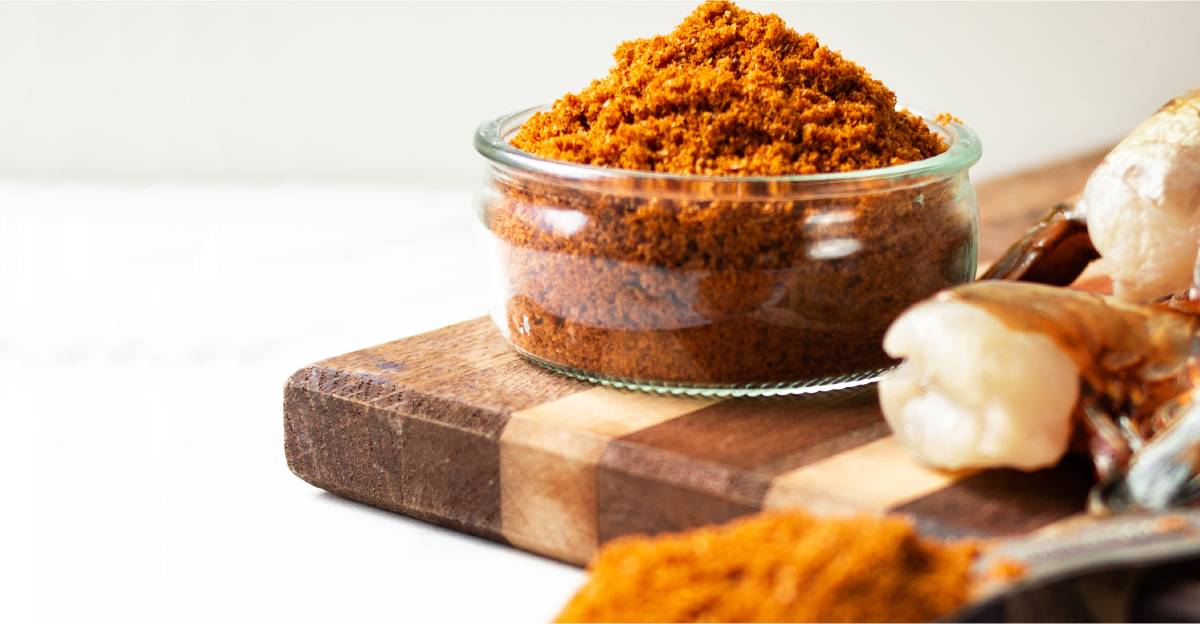
A standardized dosage recommendation isn’t so simple and any blanket statement implying it is gets a stern finger wag because there are several variables to consider:
Diet
A dog should be getting antioxidants from their diet to combat oxidative stress, which means that superfoods like blueberries, spinach, sweet potatoes and cranberries should be making it into their bowl. But any kibble that touts antioxidant-rich ingredients like blueberries does not count. Antioxidants are highly susceptible to heat and do not survive the production process of kibble. That heat also produces a carcinogen called acrylamide. Not to mention that any kibble using grain can also carry mycotoxins and endotoxins.
So, if you feed kibble, you’ll need to add plenty of extra antioxidants to the bowl to contribute to the overall number of free-radical fighting antioxidants your dog has alongside astaxanthin. More so than you would if you feed, say, a DIY raw, balanced prey model diet (that offers a properly proportional percentage of antioxidant-rich produce, of course).
Age
As we learned earlier, there are also endogenous antioxidants that the body produces to help fight free radicals. When dogs are young, healthy and vibrant, it’s because the body is producing many of its own endogenous antioxidants to clean up free radicals. As dogs age though, their body’s production slows and the effects are quite evident– that graying to the eyes and muzzle for one.
The takeaway here is that the older the dog, the more antioxidants they’ll need. And we can’t stress enough that it’s so important to start sooner than later. Don’t wait till you notice those puppy dog eyes graying or grey hairs peeking into their muzzle, you should up an aging dog’s antioxidants during the last third of their life, which depends largely on the size of the dog.
There isn’t one gospel truth for what an optimal amount of astaxanthin is, because every dog is different. What we can do is offer a general guide to help you understand when supplementation is a must based on factors like the above.
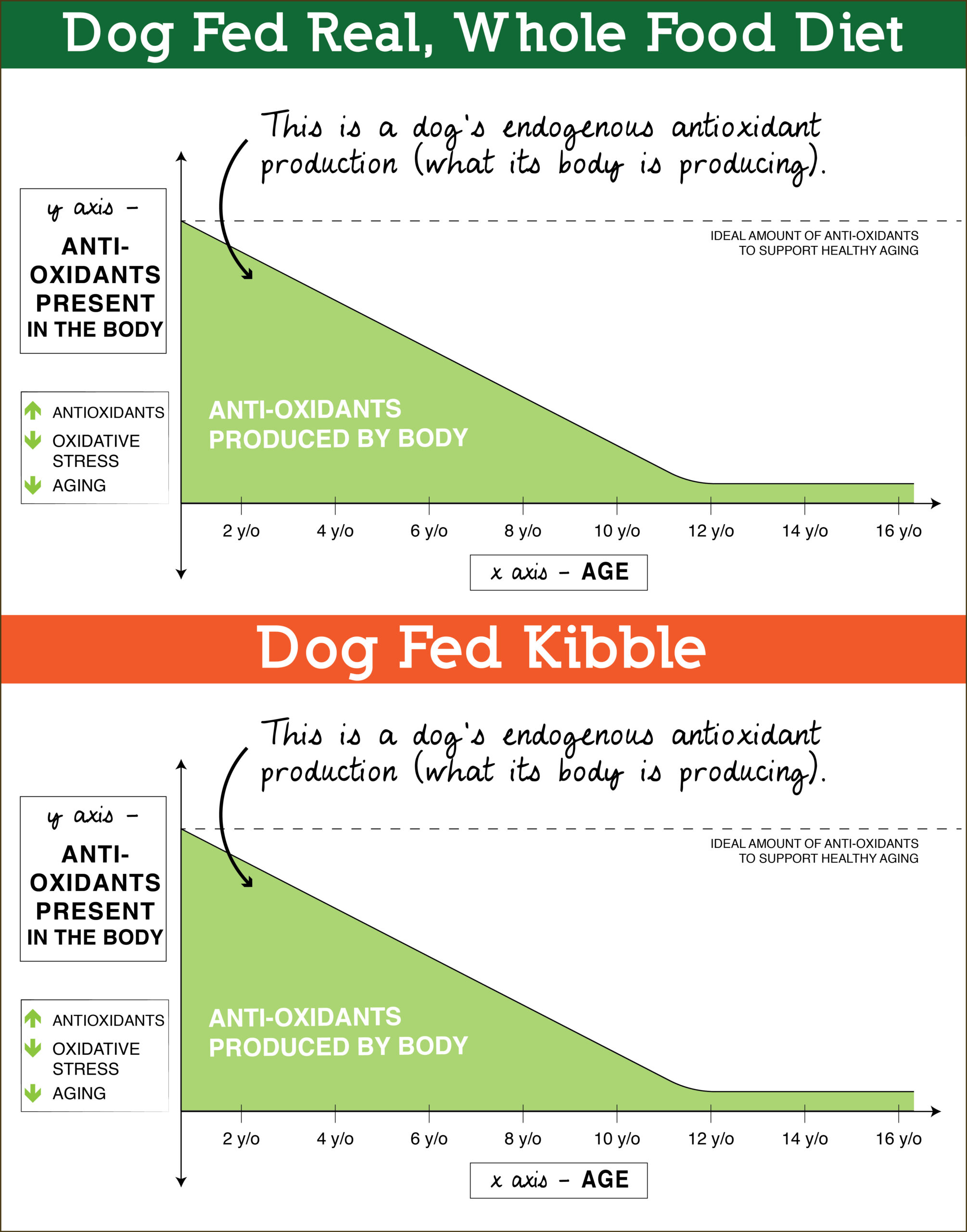
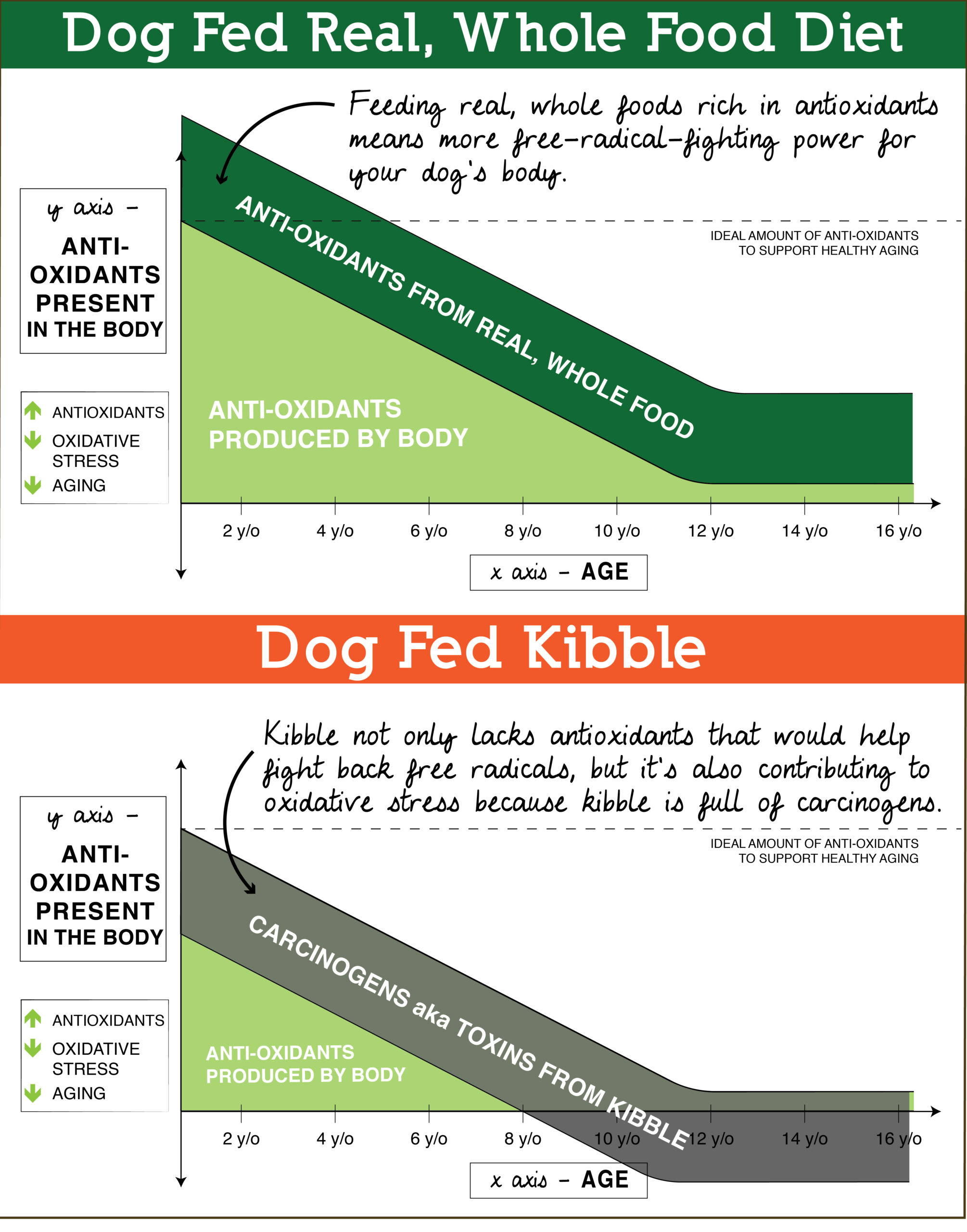
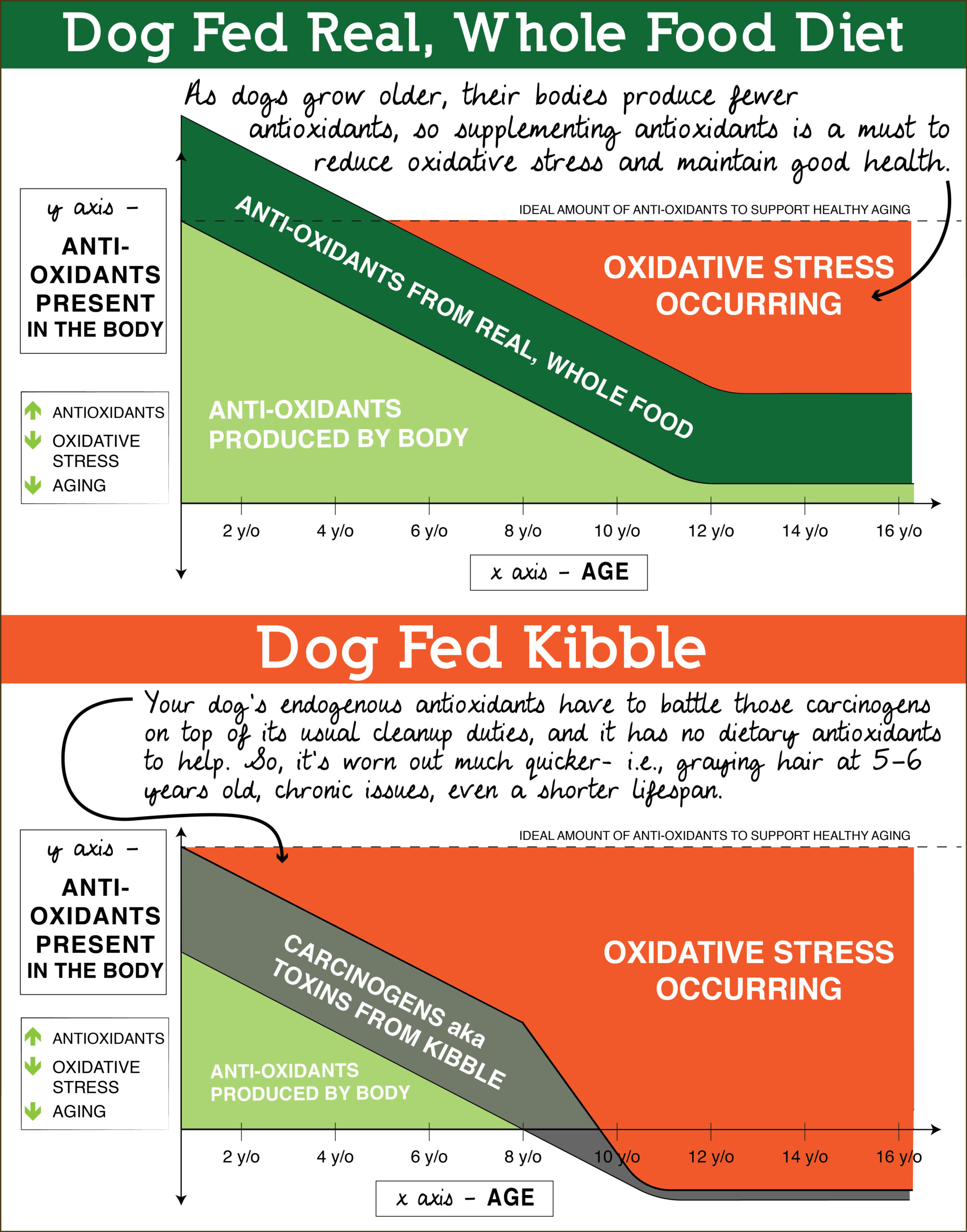
The Health Benefits Of Astaxanthin

Now you know astaxanthin helps prevent free radical attacks, but what does that really mean for your dog’s day-to-day health? Well, astaxanthin has a wide range of concrete health benefits, including improved immune function (think of the immune system as the first line of defense against getting sick, and that includes decreasing incidences of disease like cancer). Astaxanthin also has anti-inflammatory properties which can benefit dogs’ health in a variety of ways — from their skin to their joints!
Astaxanthin has also been linked to faster recovery from exercise and protection of the skin from harmful UV rays, which is good news for all those pups who love running around at the park in the dead of summer (three cheers for the humans who forego the AC to take them).
Because it can cross the blood-brain barrier, meaning the central nervous system, including the brain, spinal cord, and nerves, astaxanthin can also positively impact the central nervous system, to help protect against the potential of associated diseases. Astaxanthin can also cross the blood-retina barrier, so it supports eye health as well — which means your dog will be able to melt your heart (and manipulate you?) with those endless pools of puppy-dog eyes for years to come.
Yep. All that from one little antioxidant.
The short answer: astaxanthin supports the body in a variety of important ways, mainly by working proactively to maintain health. Just about everyone — canine and human — can benefit from this antioxidant.
Conclusion
It’s safe to say that we are pro antioxidants — especially this super powerful one called astaxanthin. Aging is a natural part of life, but antioxidants can help reduce cell damage known as oxidative stress, which means a healthier pup at any age. And remember, it’s important to include antioxidants like astaxanthin in your dog’s diet proactively. Don’t wait for your dog to grow old or develop health issues. You could even start today!
Share this Post

Dr. Chris Besent
Chris Bessent, DVM, MSOM, Dipl. OM, L.Ac. has over thirty years of experience in veterinary medicine including certificates in veterinary acupuncture, veterinary chiropractic and veterinary Chinese herbology. Imbued with Eastern philosophy and the knowledge that food is the foundation of health, Dr. Bessent also received her degree in veterinary nutrition and began to formulate recipes fit for a carnivore from nothing but whole foods. Currently, she divides her time between the Simple Food Project and Herbsmith, both of which are owned and operated out of her facilities in southeastern Wisconsin.

Hayley Zablotsky - Writer
Hayley is a freelance writer based in Northern California. (Writing for Herbsmith is her favorite, but don't spread it around.) She enjoys riding horses, taking road trips, and eating grilled cheese sandwiches. Her foster dogs have mixed feelings about the spinach she keeps trying to sneak into their bowls.

Kayla Behling - Editor
Kayla is the Content Writer for Herbsmith. She has a cat named Professor Cat-Faced Meowmers, who goes by Kitty, and a goof of a dog, named Duck. She stays busy biking trails, losing at board games, and searching for the next best craft beer.

